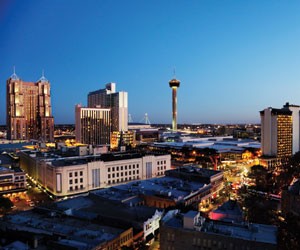When it comes to planning a meeting as complex as a downtown meeting or convention, veteran meeting planners and CVB executives say there is no such thing as too much information.
Knowing the right questions to ask the CVB—and being specific about the needs of the group—may be the most important part of the process.
“Because planners do many tasks of a repetitive nature, they can forget that every event is unique, even if it seems just like another one,” says MaryAnne Bobrow, founder of Bobrow & Associates, an association meeting planning firm in Sacramento, Calif. “When this happens, it’s easy to forget some basic steps that will ensure a very successful event.”
To cover all the bases in planning a downtown meeting, Bobrow, chair of the CIC’s APEX Standards Review Council, recommends consulting the new APEX RFP workbook, available at www.conventionindustry.org.
“The workbook takes you through all the questions that can arise, including some that you might forget to ask,” Bobrow says. “Whether it’s about trade show concessions or housing, there are important questions not to overlook.”
Among questions that must be addressed when planning a downtown meeting are those pertaining to attrition fees for unfulfilled hotel room blocks, she adds.
“When it comes to attrition, you need to ask if it’s calculated by night or if it’s cumulative, and at what point do you owe money?”
Also, Bobrow notes, “If your convention is going to have a good economic impact on the city, you might assume that you will get a break on attrition. Don’t assume this; ask.”
Give Us Your Time
Providing specific information is the most important thing a planner can do when working with a CVB in a downtown meeting situation, says Brenda Square, director of convention sales for the San Antonio CVB.
“We ask planners for their time,” she says. “We want to talk to them about their past experiences, what worked, what didn’t. It helps us tailor services for the group. The more information planners provide, the better.”
Alex Kaptzan, director of convention sales for Tampa Bay & Co., Tampa, Fla.’s CVB, agrees.
“The more information we get upfront, the more we can evaluate and customize the proposal we put forth to planners,” he says. “We need the specifics of the program, plus where they’ve been, where they may be going in the future and other destinations they may be considering.”
Providing specific information about the meeting’s off-site activities can sometimes help the CVB come up with cost-saving solutions, which is what happened during a recent convention held by the National Genealogical Society in Raleigh, N.C. The society told the city’s CVB that it wanted to visit the genealogical archives at the University of North Carolina, a request that would require moving 700 delegates from the Raleigh Convention Center to the archives in one hour.
“Instead of turning to a bus provider, we looked to our built-in public transportation, the R Line, which is a free hybrid circulator that makes a loop around downtown, including stops at the convention center and one near the archives,” says Loren Gold, executive vice president of the Greater Raleigh CVB.
“We asked the administrator to put on an extra vehicle, and we were able to move everyone to the archives. It saved money for the organization and also gave the attendees a chance to see more of downtown.”
Content, Not Just Logistics
While CVBs are known for helping planners with the logistics of housing, transportation, registration and so forth of downtown meetings, they often are resources for meeting content as well. Planners can ask the CVB for assistance in finding locally based speakers and presenters.
“Planners don’t always know how we can help with content, but connecting them with thought leaders, sponsors and exhibitors is something that we do all the time,” Gold says.
Raleigh frequently draws on its local education, scientific and technological communities as resources for conventions, he adds.
Along with providing content sources, a CVB can use its connections to drum up local attendance, especially if the planner provides specific information about the program.
“Last year we had a financial group in with some great keynote speakers,” Square says. “We wanted to make sure our local financial community knew about it so they could attend.”
Shrinking lead times
When it comes to a downtown meeting, planning far in advance is a huge help in getting the convention space, hotel rooms and other services that are required by a large group. However, CVB executives acknowledge that the booking window for a downtown meeting or convention is shrinking.
“Historically, our large groups have been booked three to five years in advance, but now it’s more like one to three years,” Kaptzan says. “We do have some short-term opportunities but, of course, the earlier things are planned, the better.”
When it comes to being able to serve large groups on relatively short notice, Gold, who has also noticed shrinking lead times, says smaller cities like Raleigh are usually better equipped than large ones.
“A large city may need five or six years out, but typically our national groups are booked two or three years out, while a large corporate meeting or SMERF group might be just a year out,” he says. “As a smaller city, we can be more flexible.”
Maria Lenhart is a former editor at Meetings Focus.







